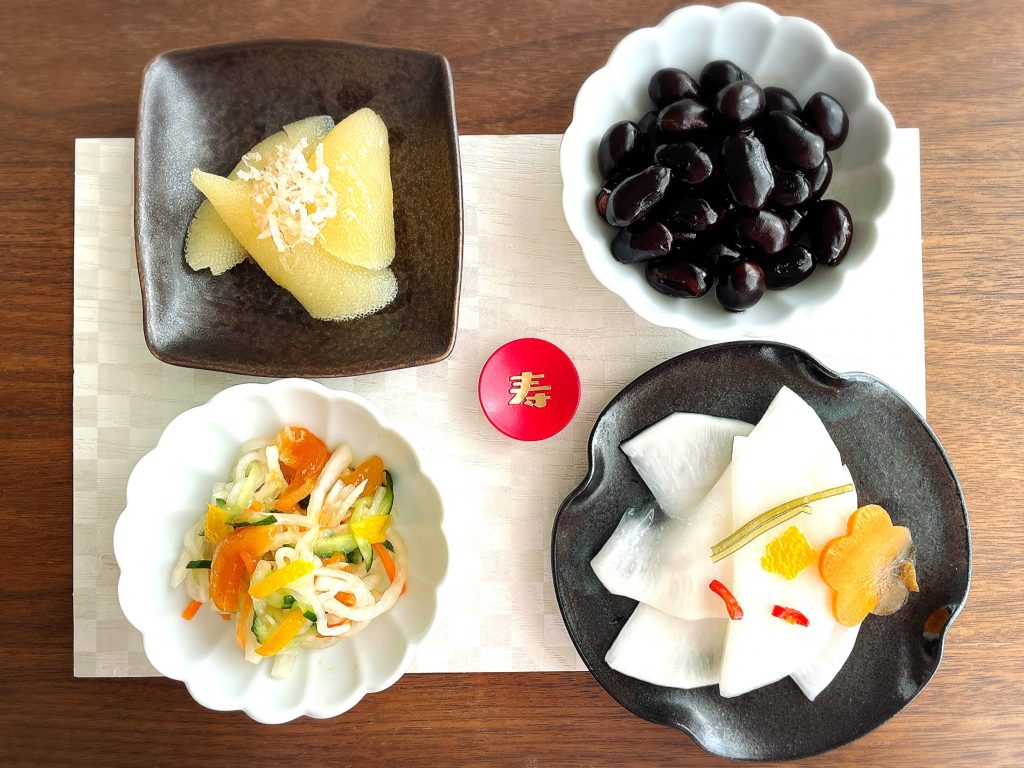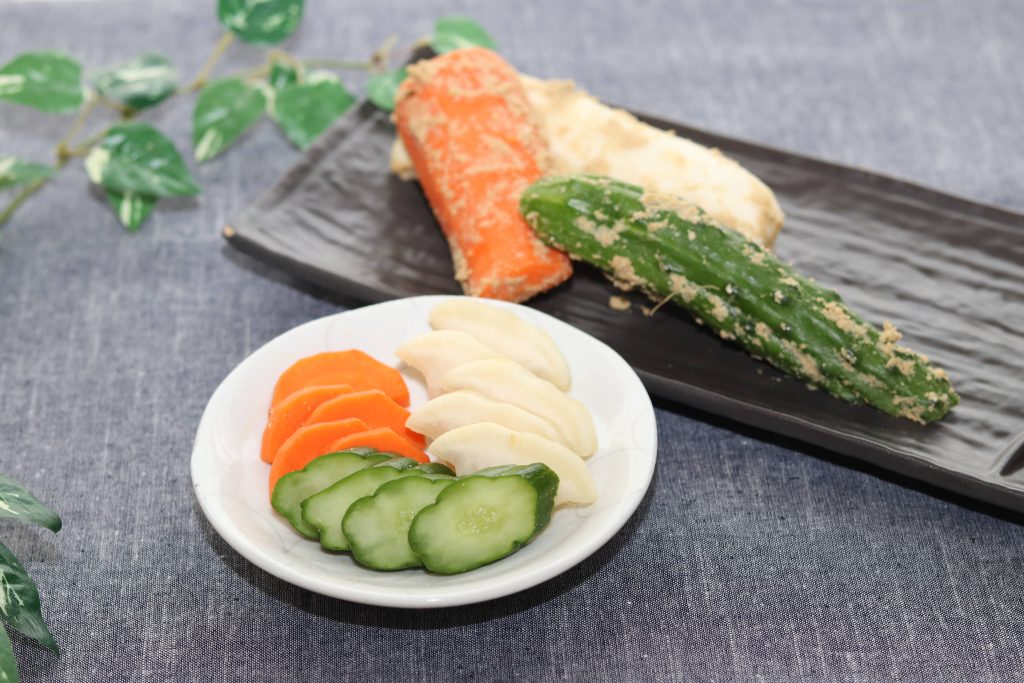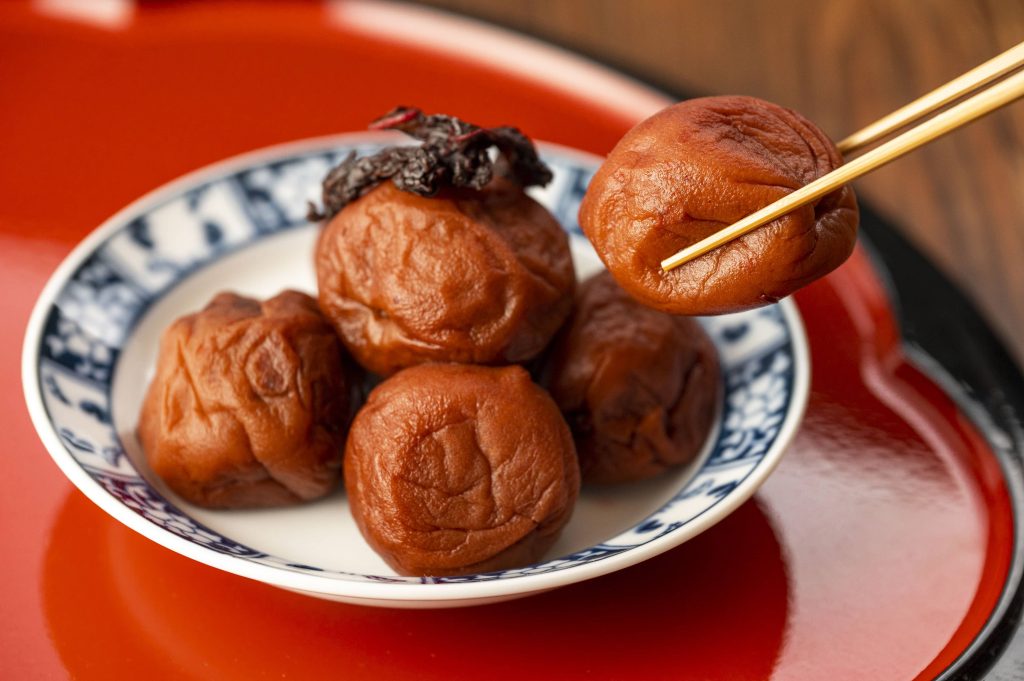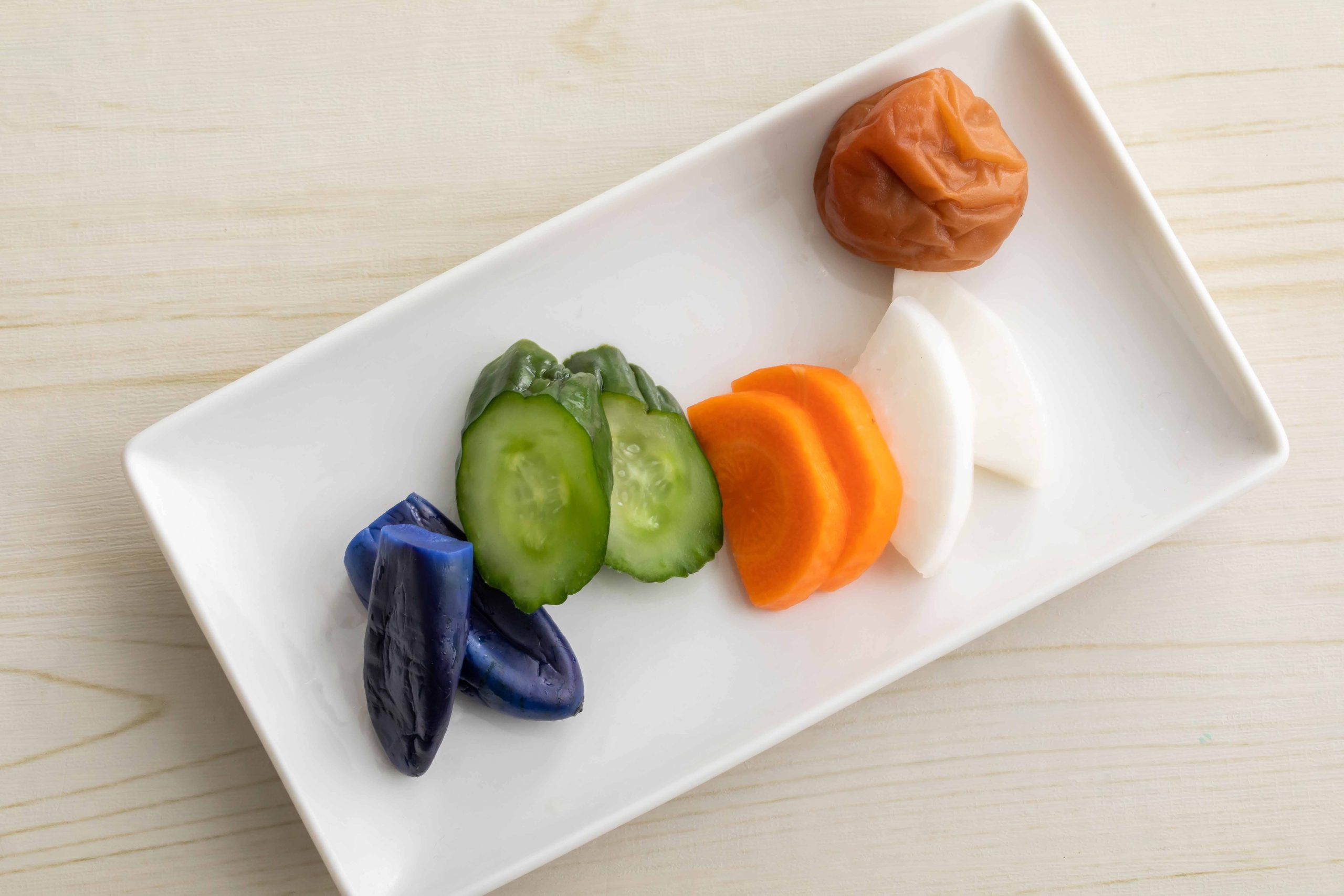Pickling is both an art form and a science in Japan, taking on a spectrum of textures, flavors, and colors. Whether served in simple bento lunches or multi-course kaiseki feasts, these side dishes are always a special part of each meal. If you’re new to Japanese pickles, let us introduce you to these nutrient-packed, crunchy, and delicious side dishes.
The Art of Pickling in Japan
Pickles in Japan can encompass a wide variety of vegetables, fruits, and even seafood that are preserved in a mixture of salt, vinegar, and other seasonings. “Shaki shaki” (シャキシャキ) is an onomatopoeic term that describes the crisp and crunchy texture of fresh vegetables and is a testament to the satisfying crunch of a well-made pickle. The next time you enjoy a perfect pickle, remember to say “shaki shaki“!
In Japanese cuisine, pickles are categorized into several types, each with its own distinct preparation method and flavor profile. Here are the most common ones:
- Salty Pickles (Shiozuke): These pickles are preserved in salt and often include vegetables like cucumbers, radishes, and eggplants. The salt draws out excess moisture, leaving the vegetables with a pleasing crunch. The salty and savory notes make them a perfect accompaniment to rice.
- Sweet Pickles (Amazuzuke): As the name suggests, these pickles are sweet and tangy. They are often made using sugar, vinegar, and soy sauce, resulting in a delightful contrast of flavors. Daikon radish and ginger are commonly used for amazuzuke.
- Sour Pickles (Suzuke): These pickles are typically preserved in vinegar, which imparts a zesty and tangy flavor. One well-known example is “umeboshi,” or pickled plums, which have a strong sour taste and are used sparingly due to their intensity.
- Fermented Pickles (Nukazuke): Nukazuke involves fermenting vegetables in a rice bran mixture known as “nuka.” This method imparts a complex umami flavor and is often used for veggies like cucumbers and radishes. The fermentation process can take several weeks, resulting in a unique depth of flavor.
Cultural Significance
 Beyond their culinary appeal, pickles hold cultural significance in Japan. They are a symbol of preservation and resourcefulness, as pickling allowed people to enjoy vegetables year-round, even in the absence of fresh produce. Additionally, pickles are often associated with celebrations and rituals, such as the Japanese New Year’s tradition of eating “osechi ryori,” a special assortment of dishes that includes various types of pickles.
Beyond their culinary appeal, pickles hold cultural significance in Japan. They are a symbol of preservation and resourcefulness, as pickling allowed people to enjoy vegetables year-round, even in the absence of fresh produce. Additionally, pickles are often associated with celebrations and rituals, such as the Japanese New Year’s tradition of eating “osechi ryori,” a special assortment of dishes that includes various types of pickles.
Health Benefits of Pickles
In addition to being delicious, Japanese pickles also offer a range of health benefits. Many types of pickles are low in calories and fat, and the fermentation process involved in some pickles, such as nukazuke and some kimchi varieties, promotes the growth of probiotics—beneficial bacteria that support gut health and digestion. These probiotics contribute to a balanced gut microbiome, potentially aiding immune function and nutrient absorption.
Furthermore, pickled vegetables often retain the nutritional value of the vegetables used, including vitamins, minerals, and dietary fiber. Pickled daikon radish is a good source of vitamin C, while pickled cucumbers provide essential nutrients like potassium and vitamin K. Antioxidants in certain pickles may also help combat oxidative stress in the body. When enjoyed as part of a well-rounded diet, Japanese pickles can be a flavorful and nutritious choice that supports overall well-being.
Exploring the Diversity of Japanese Pickles
Japan’s regional diversity is reflected in its pickles, with each area boasting its own unique specialties. For example, Kyoto is known for its “senmai-zuke,” thinly sliced pickled vegetables, while Hiroshima is famous for “fukujinzuke,” a spicy pickle blend served with okonomiyaki. The next time you enjoy a Japanese meal, pay attention to the pickles on your plate – they are not just side dishes but a vibrant expression of tradition and taste.
Whether you’re a fan of salty, sweet, sour, or fermented flavors, there’s a pickle for everyone to love in Japanese cuisine! Have you tried Japanese pickles before? Where and how have you tried them? Share your thoughts, comments, and questions with us on Twitter, Facebook, or Instagram! #Zojirushi #ZoFan



Leave a Reply